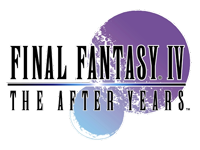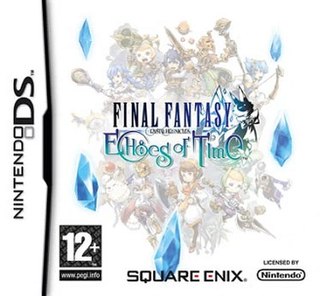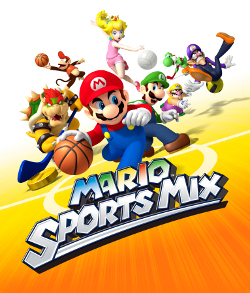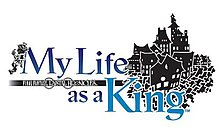
Final Fantasy IV, known as Final Fantasy II for its initial North American release, is a role-playing video game developed and published by Square for the Super Nintendo Entertainment System. Released in 1991, it is the fourth main installment of the Final Fantasy series. The game's story follows Cecil, a dark knight, as he tries to prevent the sorcerer Golbez from seizing powerful crystals and destroying the world. He is joined on this quest by a frequently changing group of allies. Final Fantasy IV introduced innovations that became staples of the Final Fantasy series and role-playing games in general. Its "Active Time Battle" system was used in five subsequent Final Fantasy games, and unlike prior games in the series, IV gave each character their own unchangeable character class.

Final Fantasy V is a fantasy role-playing video game developed and published by Square in 1992. It is the fifth main installment of the Final Fantasy series. The game first appeared only in Japan on Nintendo's Super Famicom. It has been ported with minor differences to Sony's PlayStation and Nintendo's Game Boy Advance. An original video animation produced in 1994 called Final Fantasy: Legend of the Crystals serves as a sequel to the events depicted in the game. It was released for the PlayStation Network on April 6, 2011, in Japan. An enhanced port of the game, with new high-resolution graphics and a touch-based interface, was released for iPhone and iPad on March 28, 2013, for Android on September 25 the same year and for Windows on September 24, 2015. A more enhanced re-release of the game as part of the Final Fantasy Pixel Remaster series, was released on November 10, 2021 for Android, iOS, and Windows, and for Nintendo Switch and PlayStation 4 on April 19, 2023.

Square Enix Holdings Co., Ltd. is a Japanese multinational holding company, video game publisher and entertainment conglomerate. It releases role-playing game franchises, such as Final Fantasy, Dragon Quest, and Kingdom Hearts, among numerous others. Outside of video game publishing and development, it is also in the business of merchandise, arcade facilities, and manga publication under its Gangan Comics brand.
Toshiro Tsuchida is a Japanese game director and game producer who currently works for Japanese Social Game company GREE. He formerly worked for Square Enix Co., Ltd.. He is most notably credited for creating the Front Mission and Arc the Lad media franchises.

Final Fantasy Crystal Chronicles is an action role-playing video game developed by The Game Designers Studio and published by Nintendo for the GameCube. It was released in 2003 in Japan and 2004 in North America, Europe and Australia. A remastered version for Nintendo Switch, PlayStation 4, Android, and iOS was released in August 2020. A spin-off of the Final Fantasy series and beginning of the series of the same name, Crystal Chronicles was the first title in the franchise to be released for a Nintendo home console since Final Fantasy VI in 1994.

Final Fantasy XI, also known as Final Fantasy XI Online, is a massively multiplayer online role-playing game (MMORPG), originally developed and published by Squaresoft and then published by Square Enix as the eleventh main installment of the Final Fantasy series. Designed and produced by Hiromichi Tanaka, it was released in Japan on May 16, 2002, for PlayStation 2 and Microsoft Windows-based personal computers in November of that year. The game was the first MMORPG to offer cross-platform play between PlayStation 2 and PC. It was later released for the Xbox 360 in April 2006. All versions of the game require a monthly subscription to play.

Akitoshi Kawazu is a Japanese game designer, director, producer and writer. After joining Square in 1985, he went on to become a central developer for the first two Final Fantasy titles, then acted as creator and lead developer for the SaGa series.

Final Fantasy Crystal Chronicles: The Crystal Bearers is an action-adventure game developed by Square Enix and released for Wii. It was released on November 12, 2009 in Japan and on December 26 in North America. The game received a mixed reception.

Final Fantasy Crystal Chronicles: Ring of Fates is an action role-playing game for the Nintendo DS, developed and published by Square Enix. It is a prequel to Final Fantasy Crystal Chronicles for the GameCube. The game takes advantage of both the local wireless and Wi-Fi capabilities of the system and features voice acting.
WiiWare is a service that allowed Wii users to download games and applications specifically designed and developed for the Wii video game console made by Nintendo. These games and applications could only be purchased and downloaded from the Wii Shop Channel under the WiiWare section. Once the user had downloaded the game or application, it would appear in their Wii Menu or SD Card Menu as a new channel. WiiWare was a companion to the Virtual Console, which specializes in emulated games originally developed for other systems instead of original games.

Final Fantasy IV: The After Years is an episodic role-playing video game co-developed by Matrix Software and Square Enix, as the sequel to the 1991 title Final Fantasy IV. Set 17 years after Final Fantasy IV, The After Years follows the original cast and their descendants in episodic tales as a new villain appears, setting into action a mysterious chain of events that threatens the fate of the Blue Planet. Largely utilizing assets, locations, and mechanics from its predecessor, the title incorporates higher quality character graphics and several new gameplay systems.

Crystal Defenders is a set of two tower defense video games developed and published by Square Enix. The games use the setting of Ivalice and design elements from Final Fantasy Tactics A2: Grimoire of the Rift, forming part of the wider Final Fantasy franchise. The games feature a selection of characters sporting Final Fantasy-based character classes, and play out tower defense scenarios against recurring series of monsters. The first game in the series is Crystal Guardians, which was released in three parts for Japanese mobile phones in 2008. It was adapted for iOS later that year as Square Enix's first game for the platform, and renamed Crystal Defenders. Under that name, the game was also released between 2009 and 2011 for Android, Xbox Live Arcade, WiiWare, and PlayStation 3 and PlayStation Portable via the PlayStation Store. It was re-released with graphical improvements for iOS as Crystal Defenders Plus in 2013. A sequel, Crystal Defenders: Vanguard Storm, was released for iOS in 2009.

Final Fantasy Crystal Chronicles: Echoes of Time is a Wii and Nintendo DS action role-playing game in the Final Fantasy Crystal Chronicles series developed by Square Enix.

Final Fantasy Crystal Chronicles: My Life as a Darklord is a 2009 tower defense video game developed and published by Square Enix for the Wii and distributed through the WiiWare download service. The game is an entry in the Final Fantasy franchise, forming part of the Crystal Chronicles subseries. Taking place after Final Fantasy Crystal Chronicles: My Life as a King, the game follows the titular Darklord as she defends her mobile tower from waves of attacks as it travels across the kingdom.

Mario Sports Mix is a sports video game developed by Square Enix and published by Nintendo for the Wii. It was released in Japan on November 25, 2010, and in other regions in early 2011. It features volleyball, ice hockey, dodgeball, and basketball. The game features mostly characters and locations from the Mario series with a few guest appearances by characters from Square Enix's Final Fantasy and Dragon Quest series of games. Players can also opt to play as one of their Mii characters.

Final Fantasy is a fantasy role-playing video game developed and published by Square in 1987. It is the first game in Square's Final Fantasy series, created by Hironobu Sakaguchi. Originally released for the NES, Final Fantasy was remade for several video game consoles and is frequently packaged with Final Fantasy II in video game collections. The first Final Fantasy story follows four youths called the Warriors of Light, who each carry one of their world's four elemental crystals which have been darkened by the four Elemental Fiends. Together, they quest to defeat these evil forces, restore light to the crystals, and save their world.
Final Fantasy Crystal Chronicles is a series of video games within the Final Fantasy franchise developed by Square Enix. Beginning in 2003 with the game for the GameCube, the series has predominantly been released on Nintendo gaming hardware and covers multiple genres, including action role-playing. The Crystal Chronicles series takes place in an unnamed world inhabited by four tribes. Recurring themes include creating objects from memory and the importance of family. The gameplay, which has always been aimed at as wide an audience as possible within a genre, generally involves either multiple players or a large group working together.















